Abstract
A method is described to estimate the biodegradation potential of soluble, insoluble, and unknown organic chemicals. The method consists of two stages: (i) generation of a microbial inoculum in a bench scale semicontinuous activated sludge system during which microorganisms are acclimated to test material and the removal of dissolved organic carbon is monitored and (ii) biodegradability testing (CO2 evolution) in a defined minimal medium containing the test material as the sole carbon and energy source and a dilute bacterial inoculum obtained from the supernatant of homogenized activated sludge generated in the semicontinuous activated sludge system. Removal and biodegradation are measured using nonspecific methods, at initial concentrations of 5 to 10 mg of dissolved organic carbon per liter. Biodegradability data are accurately described by a nonlinear computer model which allows the rate and extent of biodegradation for different compounds to be compared and statistically examined. The evaluation of data generated in the combined removability-biodegradability system allows the biodegradation potential of a variety of xenobiotic organic chemicals to be estimated.
Full text
PDF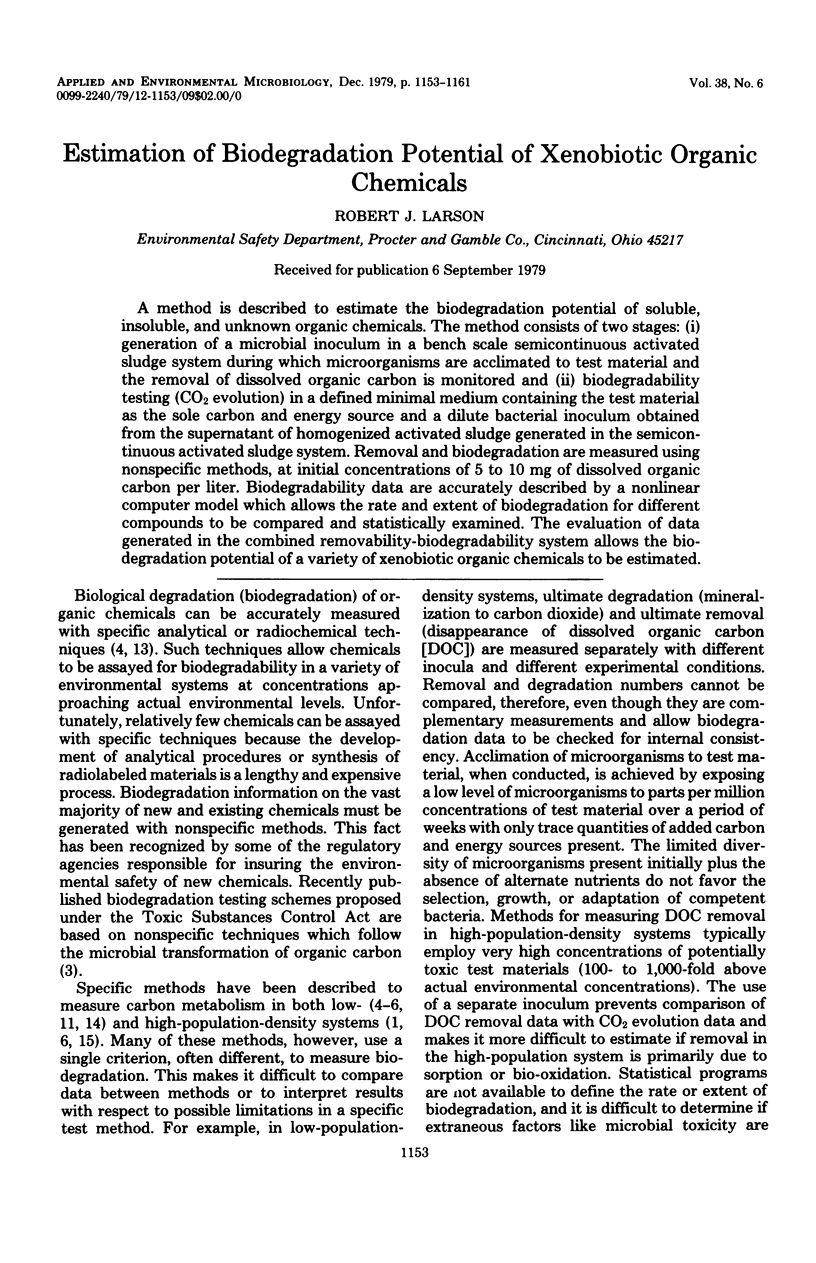

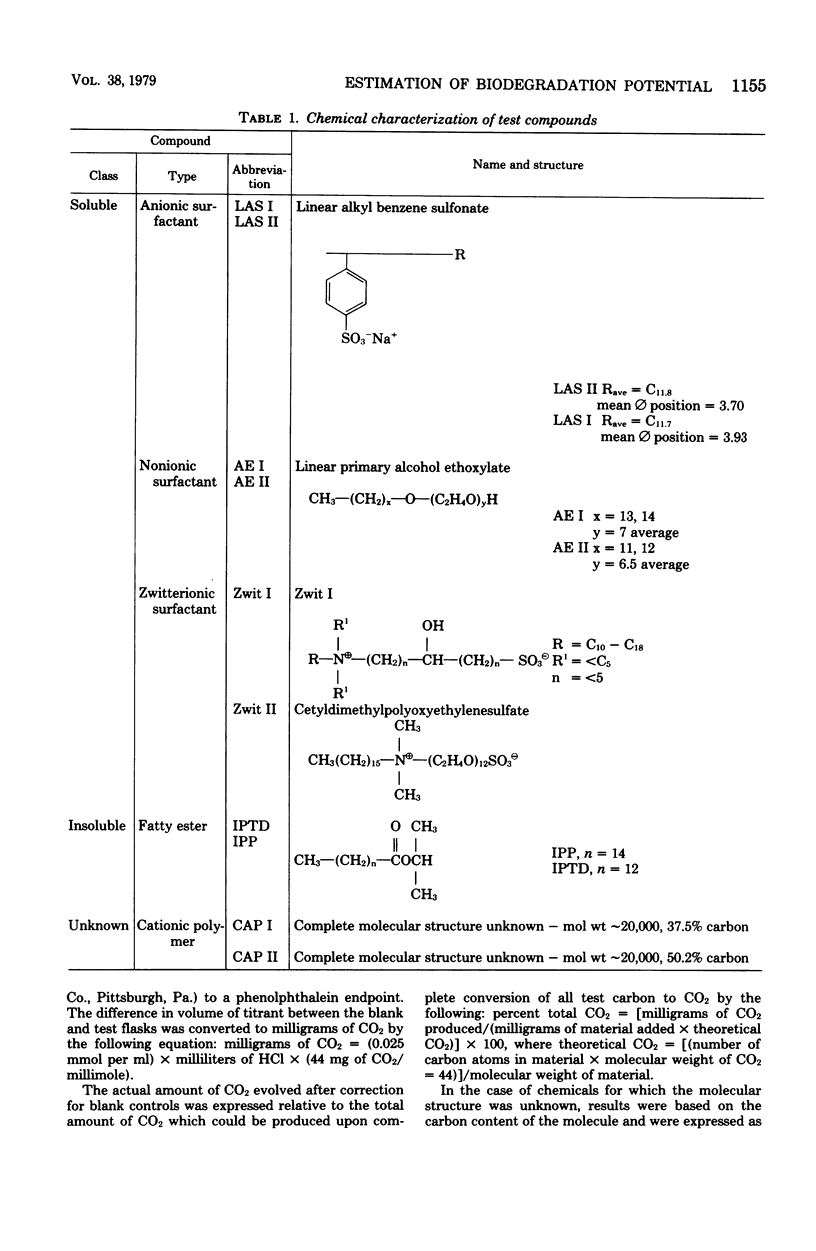
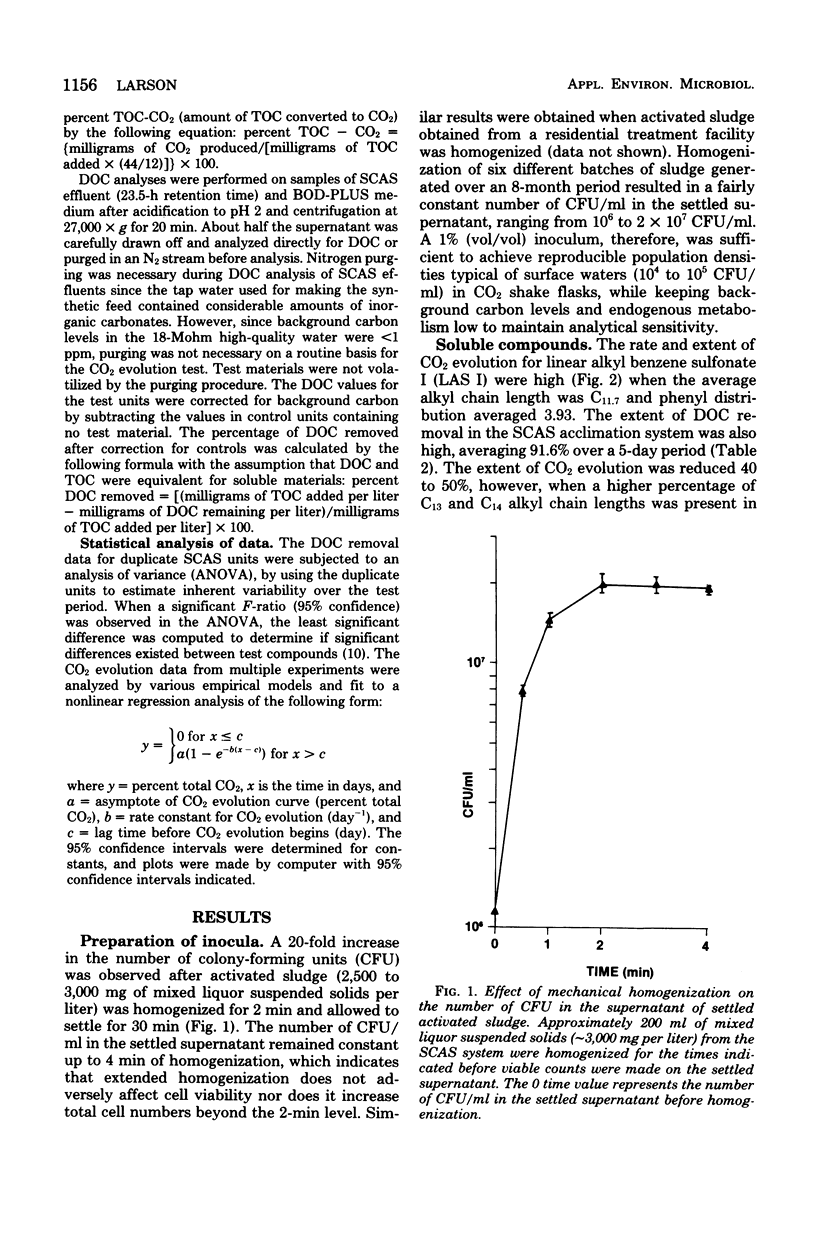
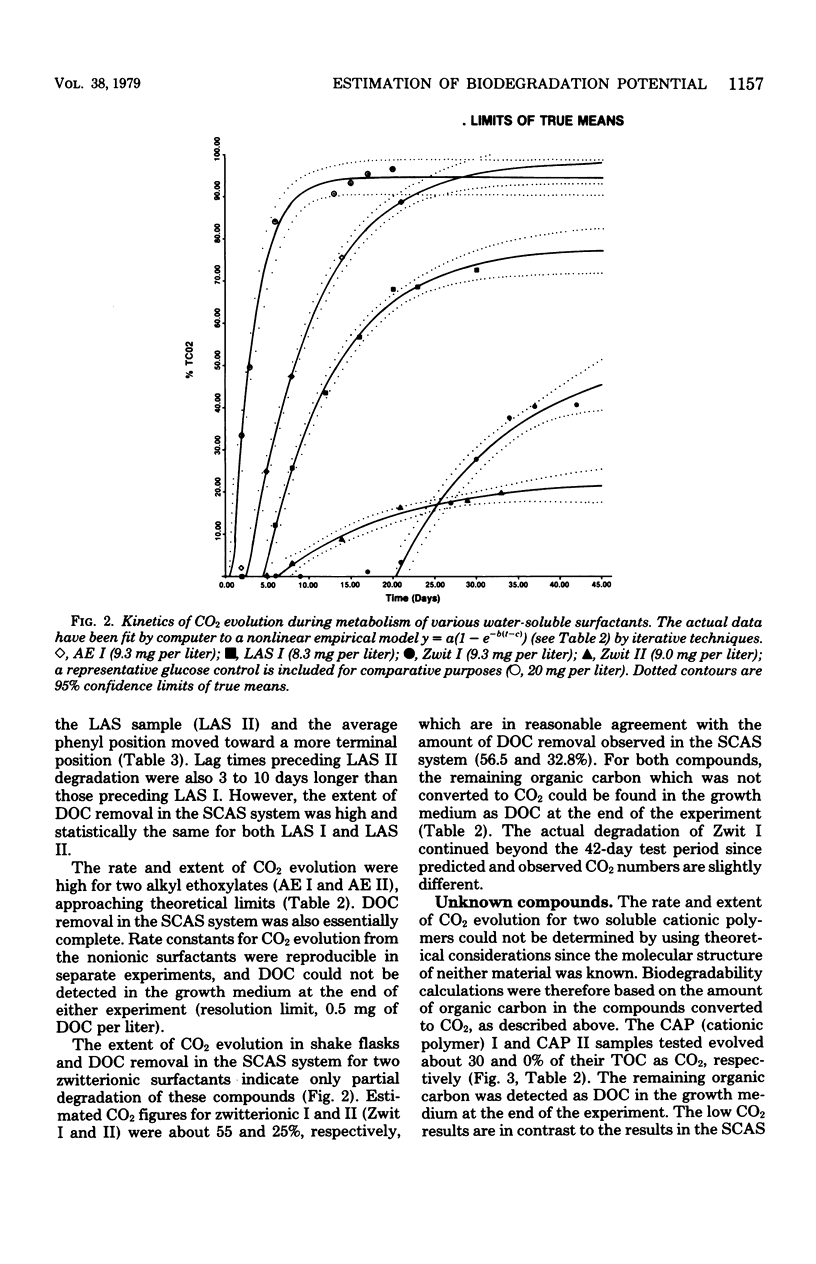
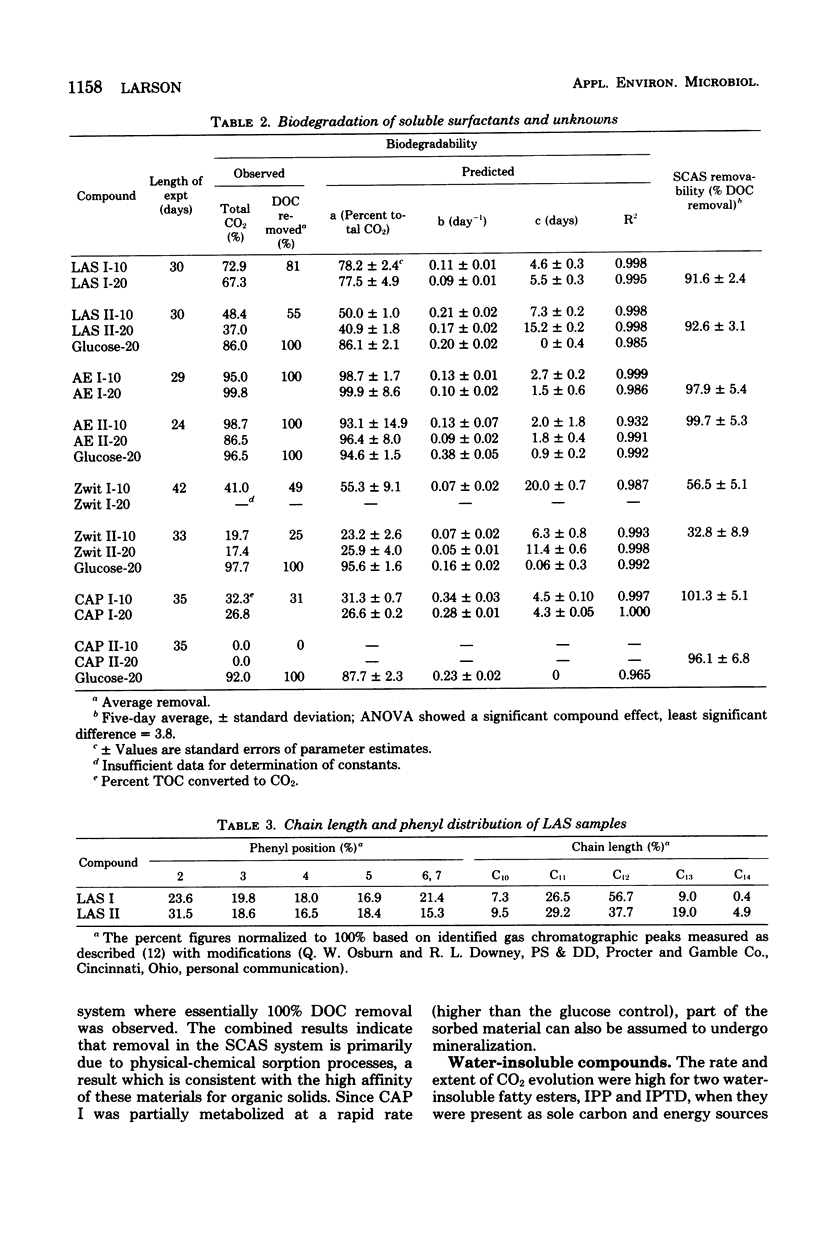
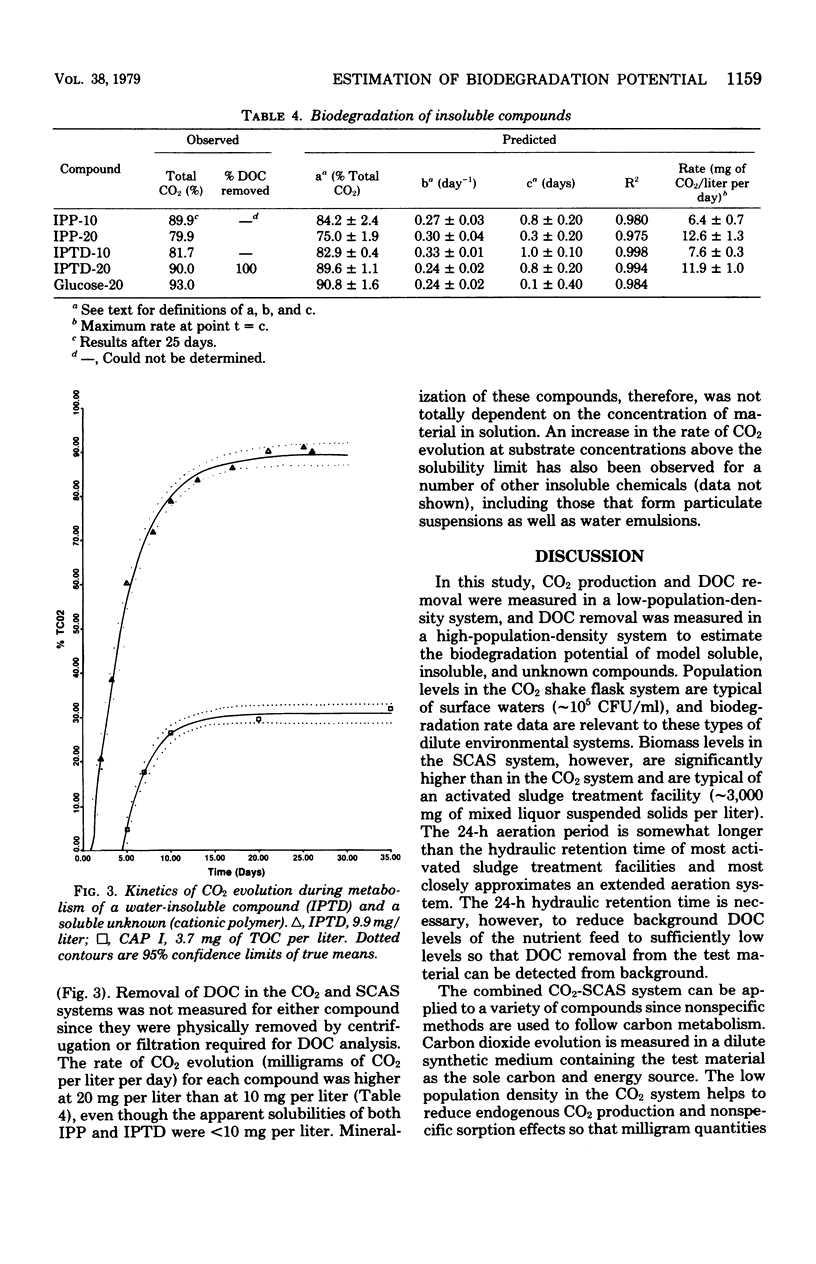
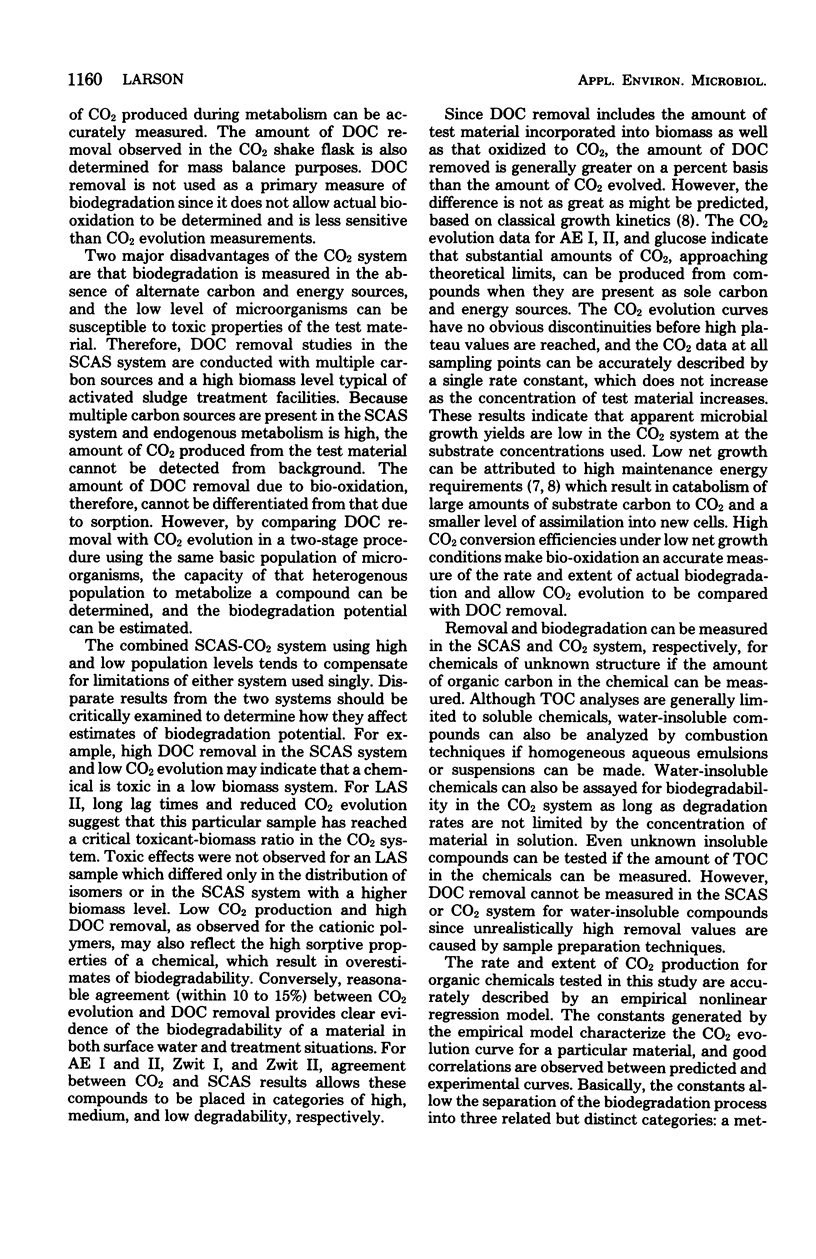

Selected References
These references are in PubMed. This may not be the complete list of references from this article.
- Gledhill W. E. Screening test for assessment of ultimate biodegradability: linear alkylbenzene sulfonates. Appl Microbiol. 1975 Dec;30(6):922–929. doi: 10.1128/am.30.6.922-929.1975. [DOI] [PMC free article] [PubMed] [Google Scholar]
- Sturm R. N. Biodegradability of nonionic surfactants: screening test for predicting rate and ultimate biodergradation. J Am Oil Chem Soc. 1973 May;50(5):158–167. doi: 10.1007/BF02640470. [DOI] [PubMed] [Google Scholar]
- Thompson J. E., Duthie J. R. The biodegradability and treatability of NTA. J Water Pollut Control Fed. 1968 Feb;40(2):306–319. [PubMed] [Google Scholar]


